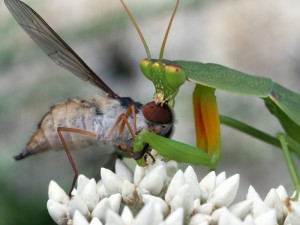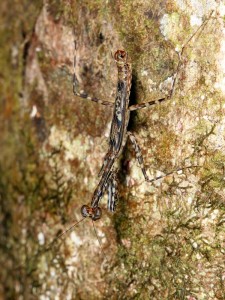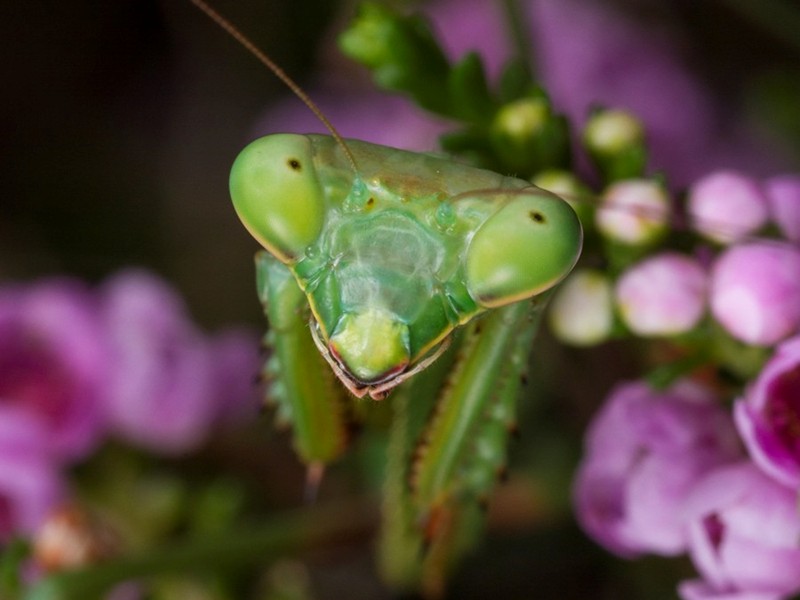Order Mantodea

about to feast on a fly.
Without doubt, praying mantids are one of the most efficient predators in the insect world. I have been lucky enough to see a couple of them in the process of catching prey and I can’t help feeling sorry for their hapless victims.
Praying mantids get their name from the way they hold their heavily spined, raptorial front legs in front of their bodies, as if in prayer. They will either sit motionless, waiting for something to come along, or slowly stalk an unsuspecting victim. When an insect or spider meal is in range, they whip out their front legs with lightning speed, seizing their prey in a vice-like grip, and start eating it alive.

All mantids have slender, elongated bodies, large compound eyes and mobile, triangular heads with short to medium length antennae. Some species have two pairs of wings, the forewings slightly hardened and the hindwings membranous. Some species have reduced wings, while others have no wings at all. Their body colours provide excellent camouflage and they prefer to live amongst grass and foliage or on the bark of trees.
The young hatch from egg cases called ootheca and they closely resemble adults. They moult several times until they reach maturity, the whole process taking six months to a year. Mating is a risky business for males because the females are quite happy to make a meal of them, during or after copulation. That’s a strong argument for remaining a bachelor if ever I heard one!
Mantids can be found in a variety of habitats in Australia, but most species are found in the tropics. At present, there are around 160 described species, although this could increase after a number of genera have been revised.
~~~~~
Click here to see the Praying Mantis photo galleries
~~~~~
